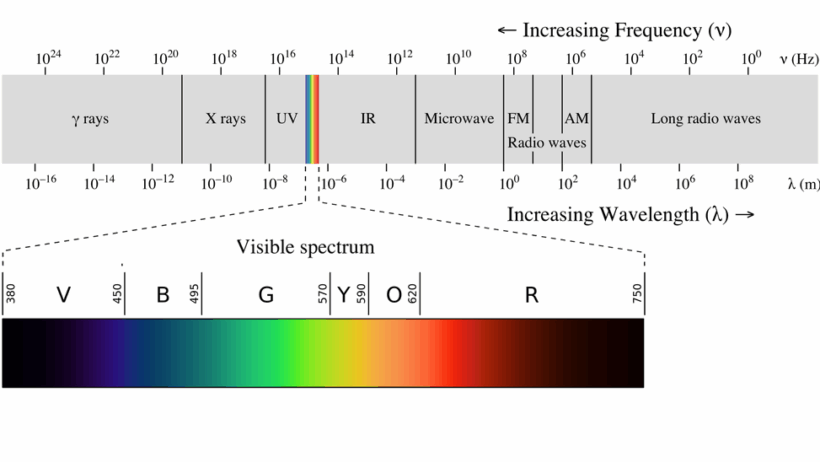The intricate interplay of electromagnetic radiation, particularly visible light, plays a pivotal role in our quest for energy efficiency and conservation. To fully grasp how radiant energy aids in conserving energy, one must first delve into the nuances of light and its myriad applications, implications, and transformative potential within our energy systems.
Radiant energy embodies energy emitted in the form of electromagnetic waves, encompassing a vast spectrum from radio waves to gamma rays. The most pertinent aspect, particularly in the context of conservation, revolves around visible light. Light is not merely an ambient phenomenon; it is a conduit of energy that can be harnessed optimally to drive systems toward efficiency. The recognition of light as an energy source has led to innovations that diminish dependency on traditional, fossil fuel-based energy systems.
One of the most prevalent applications of radiant energy is in solar power technology, which captures sunlight and converts it into usable energy. Solar panels, for instance, epitomize the brilliance of utilizing light to harness energy. Their photovoltaic cells operate on the principle of the photoelectric effect, enabling the conversion of sunlight into direct current electricity. This technology significantly reduces reliance on non-renewable energy sources and curtails greenhouse gas emissions. The shift towards solar energy highlights a fundamental truth: harnessing radiant energy is not merely an alternative; it is a necessity for sustainable future.
Greater exploration of light-emitting devices exemplifies the underlying principles of energy conservation as well. Light-emitting diodes (LEDs), which utilize semiconductor technology, have revolutionized illumination, boasting remarkable efficiencies compared to incandescent bulbs. While conventional lighting dissipates over 90% of energy as heat, LEDs convert a substantial proportion of electrical energy into light. By pivoting to LED lighting, individuals and organizations can reap considerable reductions in energy consumption, resulting in prolonged sustainability of energy resources.
Understanding the integral relationship between radiant energy and energy efficiency necessitates a broader vision that acknowledges the vast potential of harnessing natural light in architectural design. Passive solar design leverages the sun’s trajectory across the sky to minimize energy use by optimizing natural light in buildings. Strategically placed windows, skylights, and reflective surfaces allow for maximum daylight penetration while minimizing heat loss. By relying on daylight, buildings can significantly reduce the need for artificial lighting, which typically consumes a large portion of overall energy use.
However, the efficacy of radiant energy hinges on our ability to innovate and adopt technologies that elevate its role in energy conservation. Further advancements in light-harvesting materials may hold the key to increasing efficiency. Research into organic photovoltaics, for instance, offers tantalizing prospects for lightweight, flexible solar cells that can be easily integrated into surfaces and textiles. Such innovations promise to broaden the applicability of solar energy, making it a ubiquitous resource in our daily lives.
The influence of radiant energy transcends mere generation and consumption; it extends into realms of smart technology integration. Smart lighting systems, equipped with sensors and programmable controls, optimize energy use by adapting to user behavior and environmental conditions. These systems employ radiant energy efficiently and ensure that lighting is only utilized when necessary, further conserving energy. As the Internet of Things (IoT) continues to burgeon, the integration of radiant energy with intelligent technology systems enhances overall efficiency, promising significant reductions in energy waste.
Moreover, a holistic approach to energy conservation necessitates a cultural shift that prioritizes awareness and education. Understanding how radiant energy functions as a force for energy efficiency can inspire individuals and entities to take action. Educational initiatives, community programs, and policy frameworks can empower society to embrace radiant energy’s potential. When individuals comprehend the ramifications of their energy choices and the tangible benefits brought forth through radiant energy, a proactive response emerges, catalyzing collective positive change.
Envision a future woven with radiant energy and its astute applications. The idyllic prospects of green homes powered by solar energy, communities illuminated by energy-efficient LEDs, and buildings that dance with shadows and light could become the norm, rather than the exception. The convergence of technology, informed design, and societal awareness contributes to an ecosystem where energy efficiency flourishes, showcasing the sublime interplay between humanity and the natural environment.
In conclusion, radiant energy serves as a formidable ally in the fight against climate change and a champion of energy conservation. Its applications within solar power, advanced lighting technologies, and architectural design illuminate a compelling path towards reducing our carbon footprint. By embracing the potential of radiant energy, society can cultivate an environment that is not only sustainable but also vibrant and resilient. As the sun rises each day, it heralds not just light, but boundless opportunities for a sustainable future. The time for a paradigm shift is now; the promise of radiant energy beckons, urging us to reconsider our relationship with energy, efficiency, and the planet.






